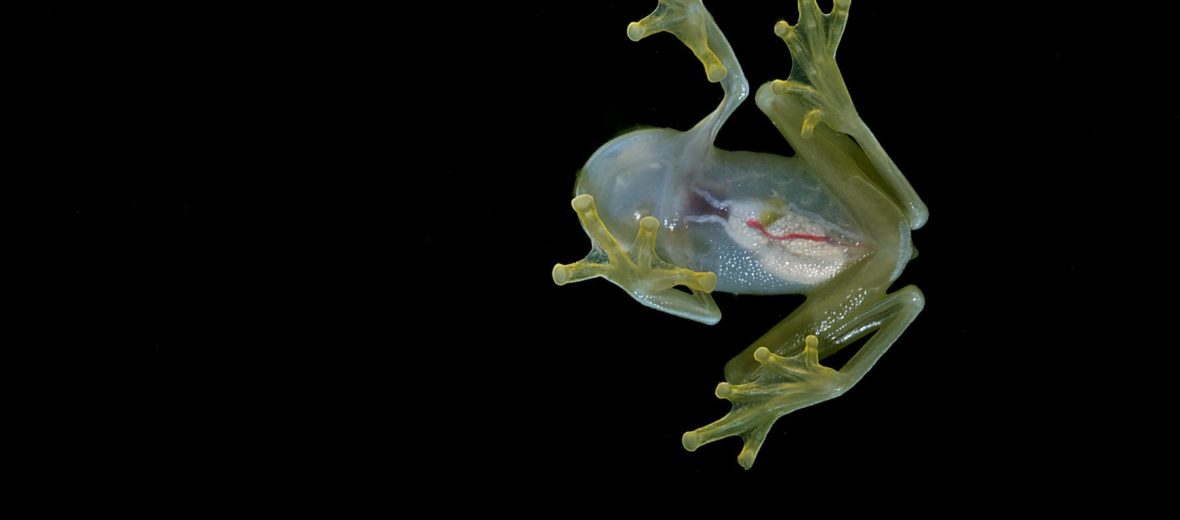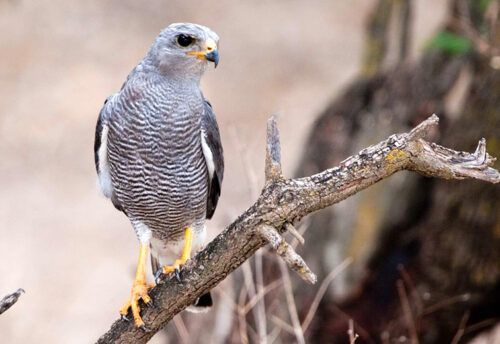
The glass frog or see-through frog is unique in that the skin on their abdomen is literally transparent. You can see their organs, including their beating heart and food moving through their digestive tract! There are 120 known species of glass frogs living in montane cloud forests of Central & South America. However, there are some species that call the Amazon, Chocóan rainforest, and semi-deciduous forests their home. These frogs are affected by deforestation, habitat destruction, climate change, and the deadly Chytrid fungus.
First the Stats…
Scientific name: Centrolenidae
Weight: Up to .5 ounce
Length: Up to 3 inches
Lifespan: Up to 14 years
Now on to the Facts!
1.) These frogs are often confused with treefrogs. But treefrogs have side mounted eyes and glass frogs have forward facing eyes. Treefrogs also don’t have a transparent ventral side (abdomen).
2.) With expanded digit tips, they are able to easily navigate through the trees and bushes, making them arboreal.
3.) The glass frog is nocturnal (active at night).
4.) Snakes, birds, rainforest wasps, and mammals all prey on these cool little critters.
5.) Males will vocalize to announce territory.
But wait, there’s more on the glass frog!
6.) Glass frogs are very territorial and will fight off other males, if necessary.
7.) Mating occurs after the rainy season.
Did you know…?
Males will often guard several egg clutches till the tadpoles emerge from the egg mass and drop into the water below. He does this by using a series of kicks to thwart egg predators from eating the eggs.
8.) The female lays her egg mass, after she mates with the male. Egg masses contain up to 30 eggs and are laid on the undersides of leaves that hang over water.
9.) It turns out that being translucent helps camouflage these little frogs from aerial predators.
10.) Being translucent also aids the tadpoles in evading predatory insects and fish.
Now a Short Glass Frog Video!
Also, check out the Critter Science YouTube channel. Videos added frequently!
Want to suggest a critter for me to write about? Let me know here.



